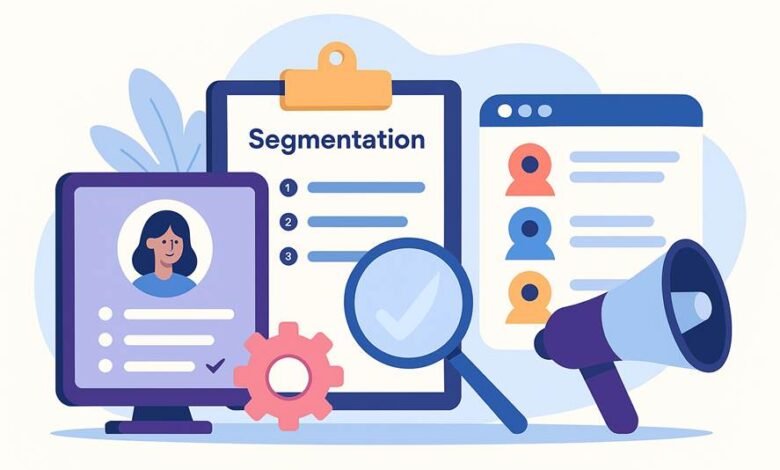Customer Segmentation Strategies to Boost Sales

Customer segmentation isn’t just data—it’s about real people. Every shopper, subscriber, or client comes with unique needs and motivations. Instead of treating everyone the same, segmentation allows you to group customers in ways that feel practical and human.
Think about how Netflix recommends shows based on your viewing habits, or how a local café remembers your favorite order. Those are simple but powerful forms of segmentation in action. By building strategies around this, businesses can boost sales, improve personalization, and strengthen loyalty.
There are countless customer segmentation examples—from demographics to behavior-driven insights. Each one gives you a sharper view of who your audience is and how to connect with them in ways that truly matter.
Why Customer Segmentation Matters for Sales
If you’ve ever received a generic email that had nothing to do with your interests, you probably ignored it. Now compare that with a message that speaks directly to you—maybe a discount on a product you’ve browsed or an update about a service you actually use. Which one is more likely to grab your attention?
That’s the real power of customer segmentation. Instead of blasting the same message to everyone, businesses can speak to smaller, well-defined groups. These groups might be based on age, location, buying behavior, or even engagement patterns. And when the message fits the audience, sales naturally increase.
Take Spotify, for example. The platform doesn’t just push random playlists. It studies listening habits and creates “Discover Weekly” mixes tailored to each user. That’s segmentation in action—turning data into a personalized experience that keeps people coming back.
For sales teams, segmentation works the same way. It helps you focus your efforts, reduce wasted outreach, and build trust faster. In the long run, it’s not just about making a sale—it’s about forming relationships that last.
See also: Integrating Smart Home Technology in Modern Custom Builds
Types of Customer Segmentation
Customer segmentation is not a one-size-fits-all process. In fact, businesses often combine several types to gain a clearer picture of their audience. The four most common approaches are demographic, behavioral, geographic, and psychographic segmentation.
- Demographic segmentation breaks down customers by measurable factors like age, gender, education, or income. This method helps tailor campaigns to different life stages—for example, targeting students with discounts or professionals with premium packages.
- Behavioral segmentation digs deeper, analyzing actions such as purchase history, product usage, or engagement patterns. It’s especially useful for predicting future needs. For instance, if a customer repeatedly buys eco-friendly products, you can introduce them to your brand’s sustainability line.
- Geographic segmentation focuses on location. Local businesses rely on this strategy to customize promotions for specific cities or regions. Global companies also use it to adapt messaging to cultural differences.
- Finally, psychographic segmentation explores interests, values, and lifestyles. This is where personalization shines. By aligning campaigns with what customers truly care about, brands can form emotional connections.
Technology makes all of this easier. A WhatsApp chatbot, for example, can instantly categorize new leads based on survey answers or chat interactions. This way, your sales team spends less time guessing and more time delivering tailored experiences.
Benefits of Customer Segmentation
When done right, customer segmentation can completely transform how you approach sales and marketing. Instead of sending the same message to everyone, you deliver content that speaks directly to each group’s needs. This creates stronger connections and leads to measurable business growth.
One of the biggest benefits is improved personalization. Customers today expect brands to understand them. By tailoring offers and messages to specific groups, you show that you’re paying attention—something that builds trust.
Segmentation also boosts engagement rates. Emails, ads, or chatbot conversations designed for a well-defined audience are far more likely to get clicks and responses than generic campaigns. This means your marketing spend goes further, and your ROI improves.
Another key advantage is better customer retention. When people feel that your brand “gets” them, they’re more likely to stick around. Returning customers spend up to five times more than new ones, making loyalty a powerful growth driver.
Finally, segmentation enables smarter decision-making. It gives your team clear data about who your customers are and what motivates them. With this insight, you can allocate resources more effectively and prioritize strategies that deliver results.
How to Implement Customer Segmentation
To implement customer segmentation:
- Collect detailed customer data
- Define clear and manageable segments
- Personalize communication for each group
- Use automation tools to scale efforts
- Measure results and refine regularly
Implementing customer segmentation doesn’t have to feel overwhelming. With the right steps, you can gradually break down your audience into meaningful groups and start seeing results quickly.
The first step is collecting the right data. Go beyond basic demographics like age or location. Look at purchase history, website activity, and even support interactions. These insights reveal what really drives your customers.
Next, define clear segments. Don’t try to create dozens of categories at once—start with a few that matter most, such as “first-time buyers,” “loyal customers,” or “high-value clients.”
Once your segments are in place, personalize your messaging. Automation tools like Kommo can help you deliver targeted messages across email, WhatsApp, or social media. This saves time while still keeping communication personal.
Finally, measure and refine. Customer needs change, so track engagement, sales, and retention for each group. Adjust your approach as you gather new data to keep your segmentation strategy effective.





